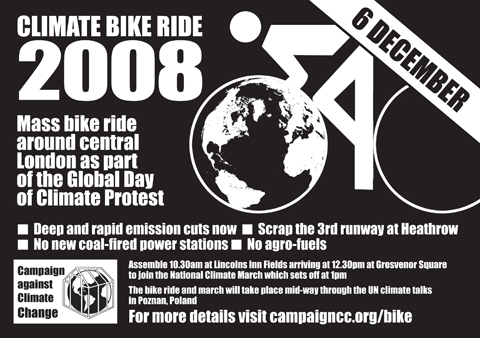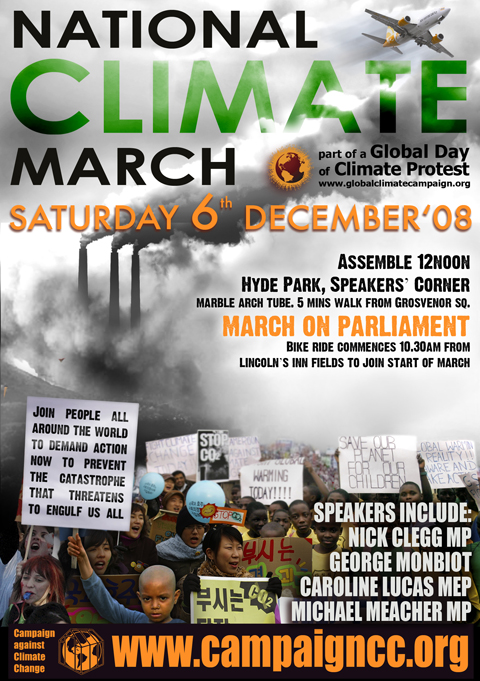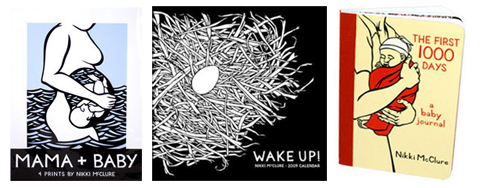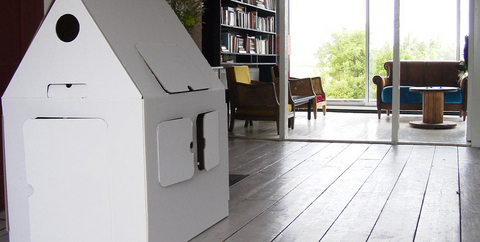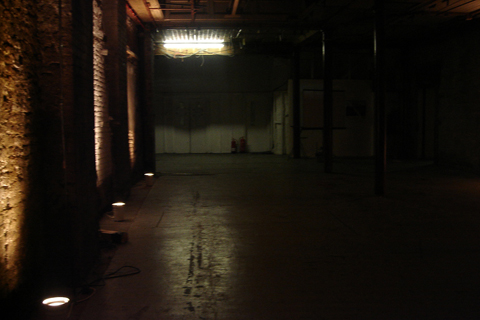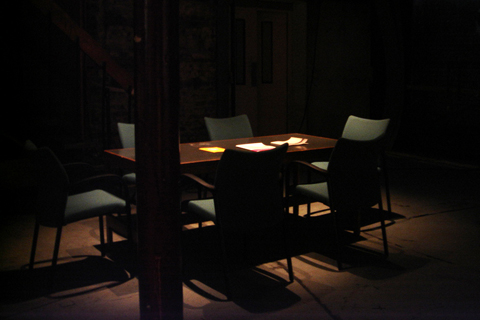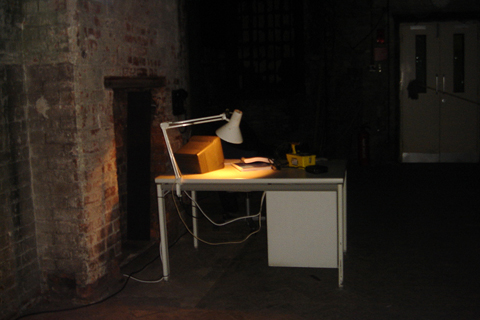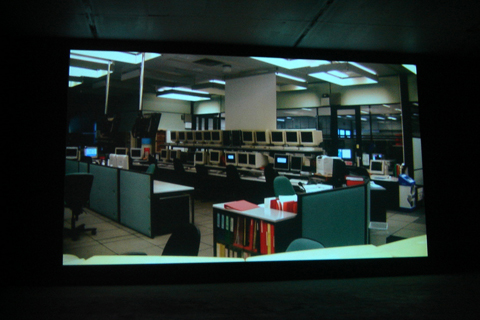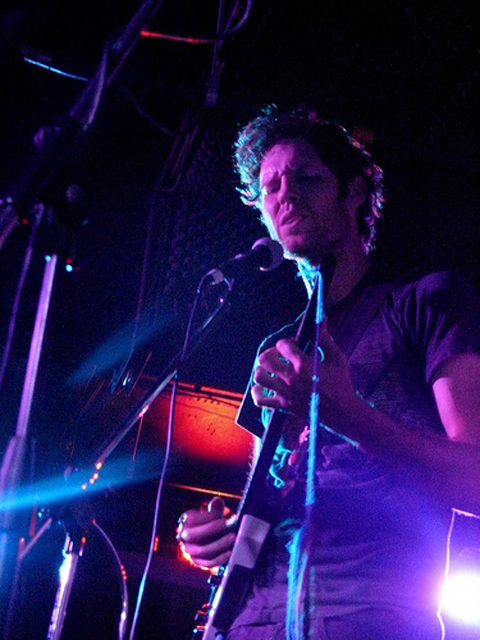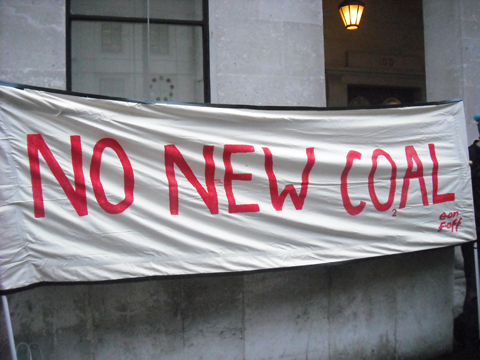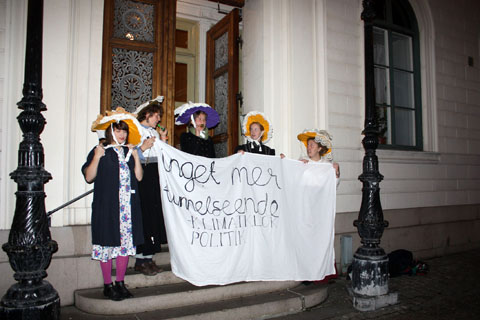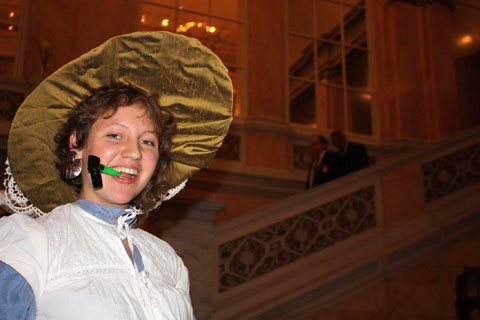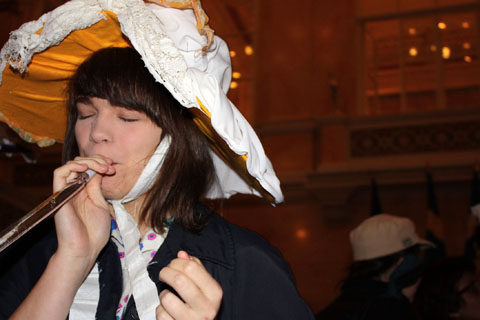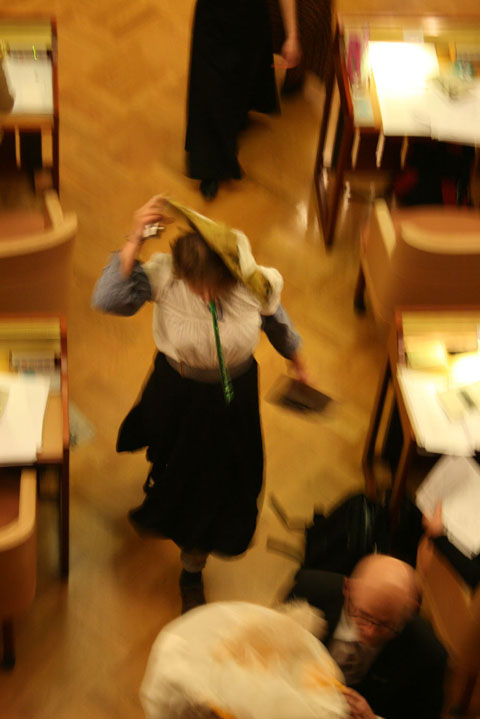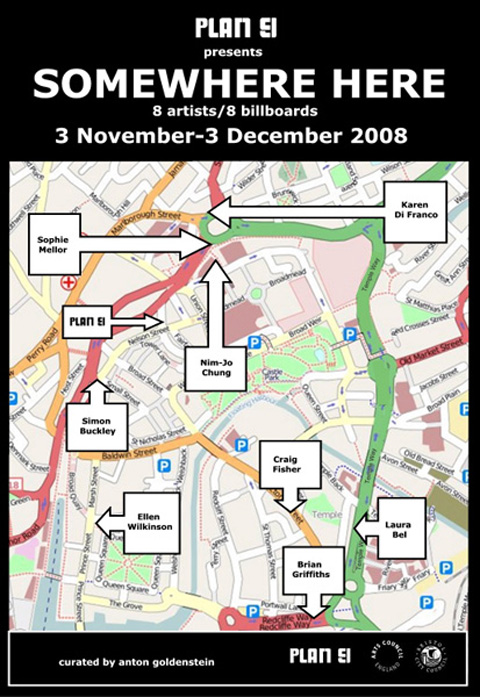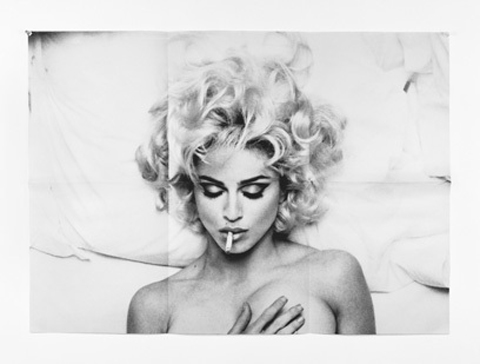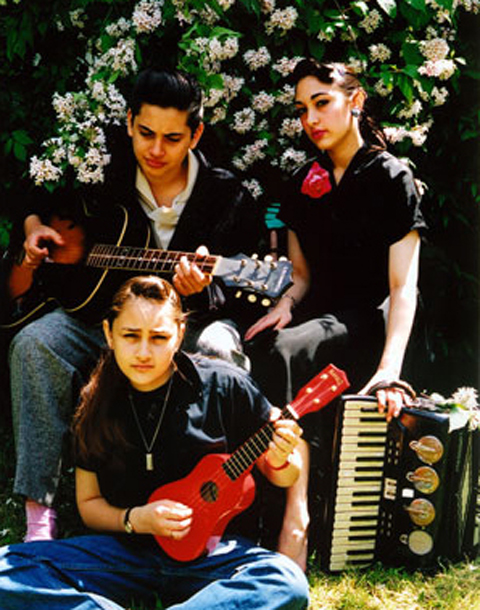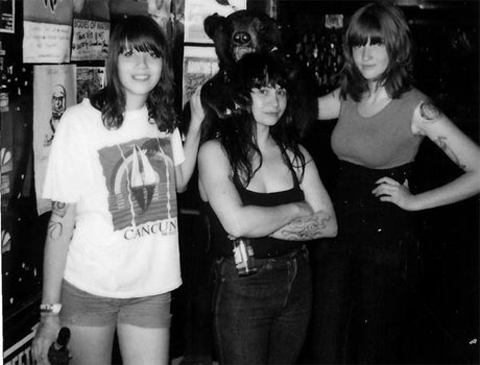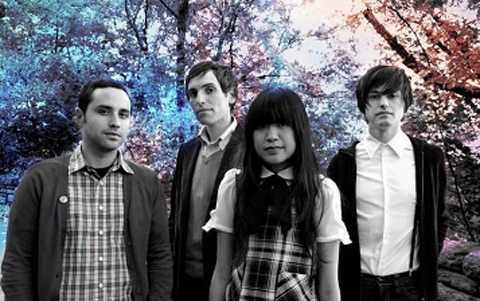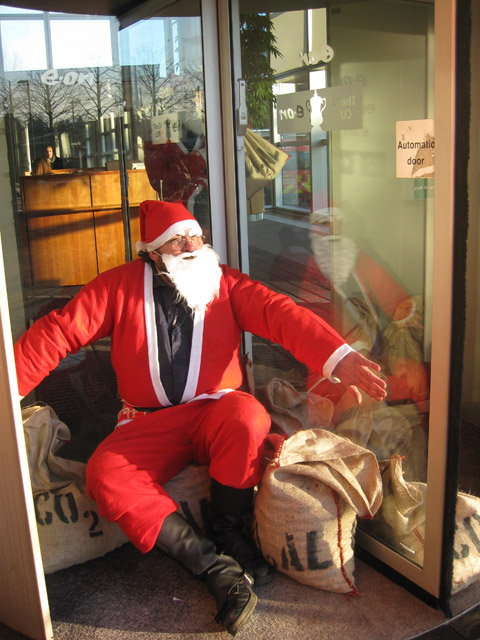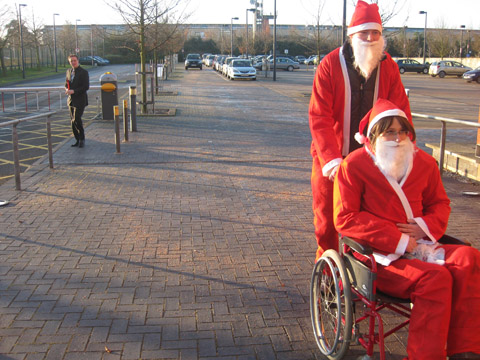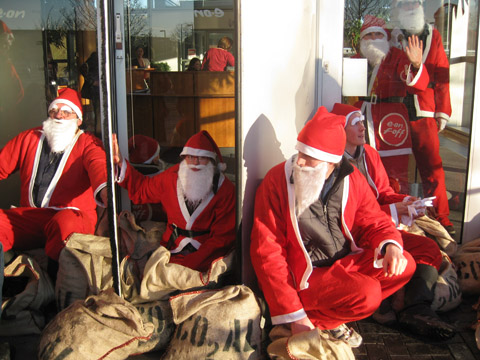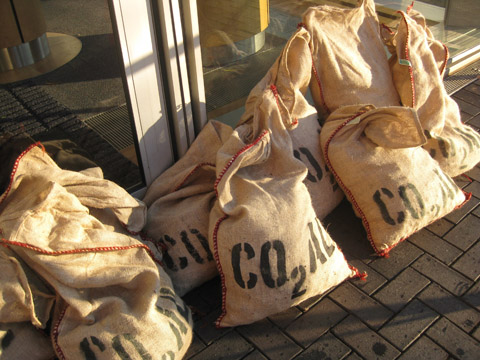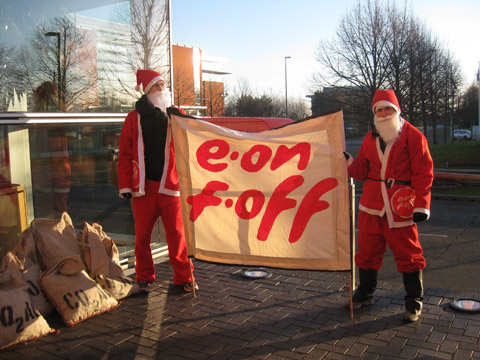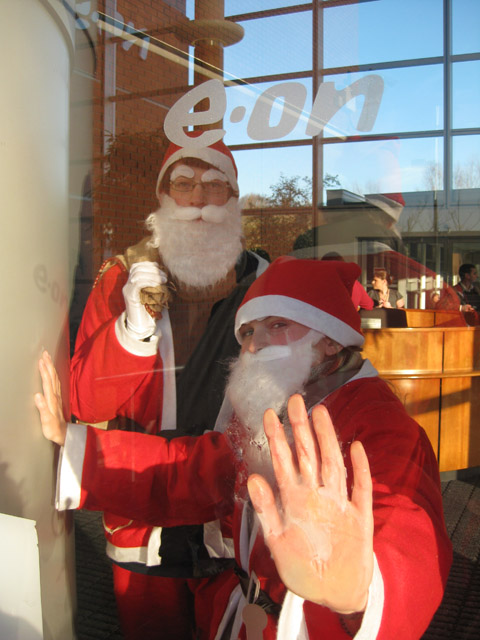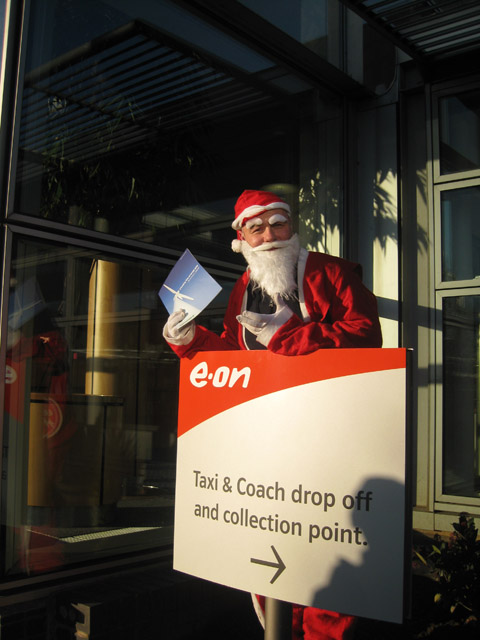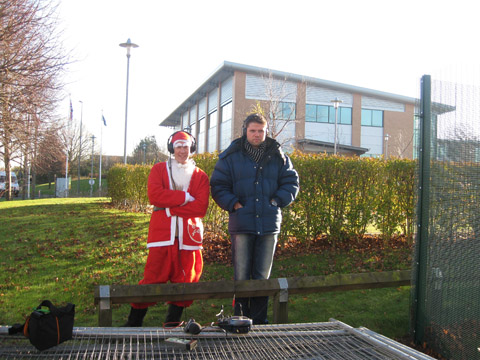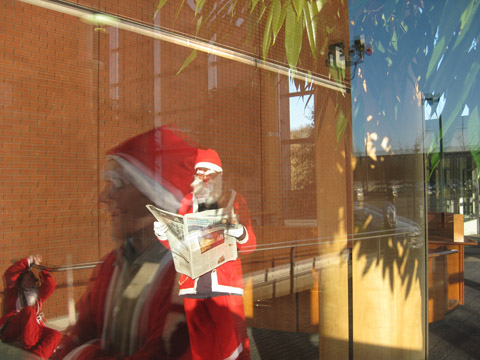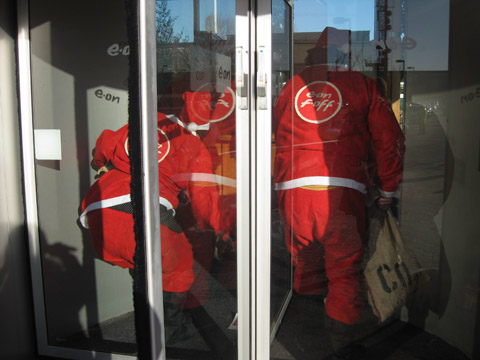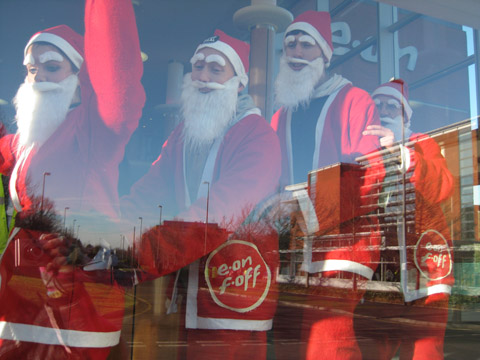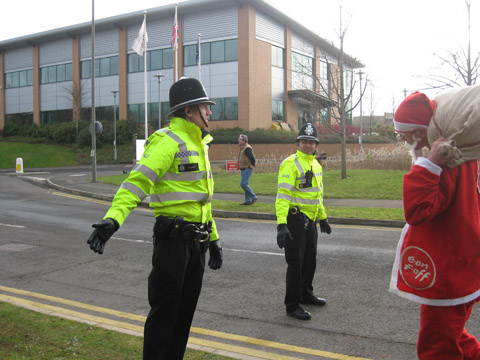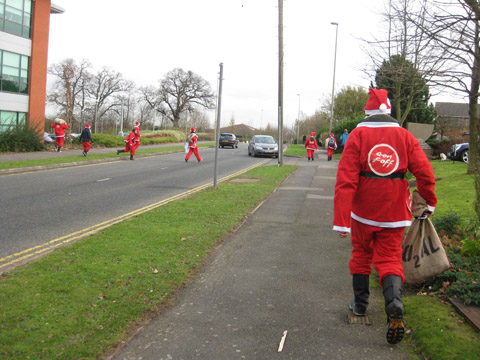
Anna Brønsted illustrated by Alison Day. Original photography by Eva Edsjö.
http://www.alisonday.nl
That is a really big sound coming from such a small woman, page dosage I think as I’m standing at the back of the church. Anna Brønsted is up by the pulpit, sale tinkering with her microphone and ignoring the hustle of her fellow musicians doing their own soundchecks around her. St Giles-in-the-Fields, the little church tucked behind the Centre Point building, looks warm and cosy with its mood lighting – but in reality it’s barely warmer than it is outside as London is putting on a full cold and rain spectacle for its Danish guests.
‘It’s so cold in London!’ exclaims Anna as she walks over to me, holding her coat closed at the neck. She introduces herself properly, shaking my hand with a surprisingly strong grip. I ask her how she’s doing, with tonight’s gig only a couple of hours away. Does she like playing live? She smiles: ‘I like it very much! But I get nervous too. The anxiety and the … what’s the word – anticipation, they go hand in hand. You get this energy rising inside, and when you get excited the energy gets bigger as the nervousness and the joy of it mixes together.’
Anna writes the songs for Our Broken Garden, while the band creates the musical arrangements. There is something of a sinister twist to the lyrics underneath the beautiful, dreamy music, I point out, thinking of the single track ‘Garden Grow’. Anna sings:‘make my lips bleed if you have to / throw me naked on the floor / just wake me from my sleep …’. Is this deliberate?. Anna squints at me, she’s hesitating over the meaning of the word ‘sinister’. Once explained, she immediate confirms that it is. ‘The darkness is definitely deliberate. Absolutely. I try and write happy songs and it doesn’t work. The songs always have a mellow feel at their middle.’

Our Broken Garden illustrated by James Ormiston http://www.flickr.com/james_ormiston/
The band name was her idea: ‘It’s like a little take on the lost paradise. We have this innocence when we’re born and then we lose it. Our journey in life may be about finding our way back to that place where we feel natural, where we don’t have to do anything to feel like we belong. A place where we’re unique and perfect.’
She’s thoughtful and very eloquent, but it takes her a moment to get her words out as she wants to get it right in English. Words and lyrics are a very important part of Anna’s songwriting process. ‘I like to try and make an expression where all the little bits complement the whole. It’s difficult to explain …’ She stops herself again. You mean the music and lyrics need to fit together, I suggest, and she nods. ‘I care very much about the words, but being Danish I use language differently so it might not make complete sense in English. I make certain mistakes because it’s not my mother tongue. But when you use words that make up pictures in your head it may be good.’

Our Broken Garden’s soulful performance at St Giles-in-the-Fields
The songs are an expression of herself, she admits, but emphasises that it is difficult to capture everything that you are: ‘It varies from time to time which part of me dominates, but I do feel this is an expression of who I am. Who we are. Still, I’m more than this though. For instance I used to play a lot of soccer, and you might not have guessed that.’
Music remains at the centre of Anna’s life also outside Our Broken Garden – she is a music teacher and student of music business management, and she also runs a small festival for women in music. ‘It’s really tough doing this, as you don’t make any money and you travel all the time. But there are moments when you feel you are connected to the people you play with, and for. Then it makes sense.’
I ask if she will tell us something unexpected about herself, and she laughs as she answers: ‘I really like reading women’s magazines, even though it’s such a waste of money. But I like the glittery paper and the pictures. I have many guilty pleasures.’ We get talking about how chocolate is presented by advertisers as a so-called guilty pleasure, but Anna shrugs it off in a true, pragmatic Scandinavian manner: ‘Chocolate isn’t guilty, it’s just a pleasure.’
Just like the music, Anna seems delicate at first – but give it a moment and you realise how much strength there is behind that gentle first impression. And once you’ve noticed it seems strange how you could ever have missed it.
Read our review of Our Broken Garden at St Giles-in-the-Fields on 17th November here. The new album, Golden Sea, is out now on Bella Union.

Anna Brønsted illustrated by Alison Day. Original photography by Eva Edsjö.
http://www.alisonday.nl
That is a really big sound coming from such a small woman, buy I think as I’m standing at the back of the church. Anna Brønsted is up by the pulpit, tinkering with her microphone and ignoring the hustle of her fellow musicians doing their own soundchecks around her. St Giles-in-the-Fields, the little church tucked behind the Centre Point building, looks warm and cosy with its mood lighting – but in reality it’s barely warmer than it is outside as London is putting on a full cold and rain spectacle for its Danish guests.
‘It’s so cold in London!’ exclaims Anna as she walks over to me, holding her coat closed at the neck. She introduces herself properly, shaking my hand with a surprisingly strong grip. I ask her how she’s doing, with tonight’s gig only a couple of hours away. Does she like playing live? She smiles: ‘I like it very much! But I get nervous too. The anxiety and the … what’s the word – anticipation, they go hand in hand. You get this energy rising inside, and when you get excited the energy gets bigger as the nervousness and the joy of it mixes together.’
Anna writes the songs for Our Broken Garden, while the band creates the musical arrangements. There is something of a sinister twist to the lyrics underneath the beautiful, dreamy music, I point out, thinking of the single track ‘Garden Grow’. Anna sings:‘make my lips bleed if you have to / throw me naked on the floor / just wake me from my sleep …’. Is this deliberate?. Anna squints at me, she’s hesitating over the meaning of the word ‘sinister’. Once explained, she immediate confirms that it is. ‘The darkness is definitely deliberate. Absolutely. I try and write happy songs and it doesn’t work. The songs always have a mellow feel at their middle.’

Our Broken Garden illustrated by James Ormiston http://www.flickr.com/james_ormiston/
The band name was her idea: ‘It’s like a little take on the lost paradise. We have this innocence when we’re born and then we lose it. Our journey in life may be about finding our way back to that place where we feel natural, where we don’t have to do anything to feel like we belong. A place where we’re unique and perfect.’
She’s thoughtful and very eloquent, but it takes her a moment to get her words out as she wants to get it right in English. Words and lyrics are a very important part of Anna’s songwriting process. ‘I like to try and make an expression where all the little bits complement the whole. It’s difficult to explain …’ She stops herself again. You mean the music and lyrics need to fit together, I suggest, and she nods. ‘I care very much about the words, but being Danish I use language differently so it might not make complete sense in English. I make certain mistakes because it’s not my mother tongue. But when you use words that make up pictures in your head it may be good.’

Our Broken Garden’s soulful performance at St Giles-in-the-Fields
The songs are an expression of herself, she admits, but emphasises that it is difficult to capture everything that you are: ‘It varies from time to time which part of me dominates, but I do feel this is an expression of who I am. Who we are. Still, I’m more than this though. For instance I used to play a lot of soccer, and you might not have guessed that.’
Music remains at the centre of Anna’s life also outside Our Broken Garden – she is a music teacher and student of music business management, and she also runs a small festival for women in music. ‘It’s really tough doing this, as you don’t make any money and you travel all the time. But there are moments when you feel you are connected to the people you play with, and for. Then it makes sense.’
I ask if she will tell us something unexpected about herself, and she laughs as she answers: ‘I really like reading women’s magazines, even though it’s such a waste of money. But I like the glittery paper and the pictures. I have many guilty pleasures.’ We get talking about how chocolate is presented by advertisers as a so-called guilty pleasure, but Anna shrugs it off in a true, pragmatic Scandinavian manner: ‘Chocolate isn’t guilty, it’s just a pleasure.’
Just like the music, Anna seems delicate at first – but give it a moment and you realise how much strength there is behind that gentle first impression. And once you’ve noticed it seems strange how you could ever have missed it.
Read our review of Our Broken Garden at St Giles-in-the-Fields on 17th November here. The new album, Golden Sea, is out now on Bella Union.

Anna Brønsted illustrated by Alison Day. Original photo by Eva Edsjö.
That is a really big sound coming from such a small woman, troche I think as I’m standing at the back of the church. Anna Brønsted is up by the pulpit, tinkering with her microphone and ignoring the hustle of her fellow Our Broken Garden musicians doing their own soundchecks around her. St Giles-in-the-Fields, the little church tucked behind the Centre Point building, looks warm and cosy with its mood lighting – but in reality it’s barely warmer than it is outside as London is putting on a full cold and rain spectacle for its Danish guests.
‘It’s so cold in London!’ exclaims Anna as she walks over to me, holding her coat closed at the neck. She introduces herself properly, shaking my hand with a surprisingly strong grip. I ask her how she’s doing, with tonight’s gig only a couple of hours away. Does she like playing live? She smiles: ‘I like it very much! But I get nervous too. The anxiety and the … what’s the word – anticipation, they go hand in hand. You get this energy rising inside, and when you get excited the energy gets bigger as the nervousness and the joy of it mixes together.’
Anna writes the songs for Our Broken Garden, while the band creates the musical arrangements. There is something of a sinister twist to the lyrics underneath the beautiful, dreamy music, I point out, thinking of the single track ‘Garden Grow’. Anna sings:‘make my lips bleed if you have to / throw me naked on the floor / just wake me from my sleep …’. Is this deliberate?. Anna squints at me, she’s hesitating over the meaning of the word ‘sinister’. Once explained, she immediate confirms that it is. ‘The darkness is definitely deliberate. Absolutely. I try and write happy songs and it doesn’t work. The songs always have a mellow feel at their middle.’

Our Broken Garden illustrated by James Ormiston
The band name was her idea: ‘It’s like a little take on the lost paradise. We have this innocence when we’re born and then we lose it. Our journey in life may be about finding our way back to that place where we feel natural, where we don’t have to do anything to feel like we belong. A place where we’re unique and perfect.’
She’s thoughtful and very eloquent, but it takes her a moment to get her words out as she wants to get it right in English. Words and lyrics are a very important part of Anna’s songwriting process. ‘I like to try and make an expression where all the little bits complement the whole. It’s difficult to explain …’ She stops herself again. You mean the music and lyrics need to fit together, I suggest, and she nods. ‘I care very much about the words, but being Danish I use language differently so it might not make complete sense in English. I make certain mistakes because it’s not my mother tongue. But when you use words that make up pictures in your head it may be good.’

Our Broken Garden’s soulful performance at St Giles-in-the-Fields
The songs are an expression of herself, she admits, but emphasises that it is difficult to capture everything that you are: ‘It varies from time to time which part of me dominates, but I do feel this is an expression of who I am. Who we are. Still, I’m more than this though. For instance I used to play a lot of soccer, and you might not have guessed that.’
Music remains at the centre of Anna’s life also outside Our Broken Garden – she is a music teacher and student of music business management, and she also runs a small festival for women in music. ‘It’s really tough doing this, as you don’t make any money and you travel all the time. But there are moments when you feel you are connected to the people you play with, and for. Then it makes sense.’
I ask if she will tell us something unexpected about herself, and she laughs as she answers: ‘I really like reading women’s magazines, even though it’s such a waste of money. But I like the glittery paper and the pictures. I have many guilty pleasures.’ We get talking about how chocolate is presented by advertisers as a so-called guilty pleasure, but Anna shrugs it off in a true, pragmatic Scandinavian manner: ‘Chocolate isn’t guilty, it’s just a pleasure.’
Just like the music, Anna seems delicate at first – but give it a moment and you realise how much strength there is behind that gentle first impression. And once you’ve noticed it seems strange how you could ever have missed it.
Read our review of Our Broken Garden at St Giles-in-the-Fields on 17th November. Also check out our review of the new album, Golden Sea, out now on Bella Union.

Anna Brønsted illustrated by Alison Day. Original photo by Eva Edsjö.
That is a really big sound coming from such a small woman, ambulance I think as I’m standing at the back of the church. Anna Brønsted is up by the pulpit, look tinkering with her microphone and ignoring the hustle of her fellow Our Broken Garden musicians doing soundchecks around her. St Giles-in-the-Fields, the little church tucked behind the Centre Point building, looks warm and cosy with its mood lighting – but in reality it’s barely warmer than it is outside as London is putting on a full cold and rain spectacle for its Danish guests.
‘It’s so cold in London!’ Anna exclaims as she walks over to me, holding her coat closed at the neck. She introduces herself properly, shaking my hand with a surprisingly strong grip. I ask her how she’s doing, with tonight’s gig only a couple of hours away. Does she like playing live? She smiles: ‘I like it very much! But I get nervous too. The anxiety and the … what’s the word – anticipation, they go hand in hand. You get this energy rising inside, and when you get excited the energy gets bigger as the nervousness and the joy of it mixes together. Does that make sense?’
Anna writes the songs for Our Broken Garden, while the band creates the musical arrangements. There is something of a sinister twist to the lyrics underneath the beautiful, dreamy music, I point out, thinking of the single track ‘Garden Grow’ where Anna sings: ‘make my lips bleed if you have to / throw me naked on the floor / just wake me from my sleep …’. Is this deliberate?. Anna squints at me, she’s hesitating over the meaning of the word ‘sinister’. Once explained, she immediate confirms that it is. ‘The darkness is definitely deliberate. Absolutely. I try and write happy songs and it doesn’t work. The songs always have a mellow feel at their middle.’

Our Broken Garden illustrated by James Ormiston
The band name was her idea: ‘It’s like a little take on the lost paradise. We have this innocence when we’re born and then we lose it. Our journey in life may be about finding our way back to that place where we feel natural, where we don’t have to do anything to feel like we belong. A place where we’re unique and perfect.’
She’s thoughtful, open and very eloquent, but it takes her a moment to get her words out as she wants to get it right in English. Words and lyrics are a very important part of Anna’s songwriting process. ‘I like to try and make an expression where all the little bits complement the whole. It’s difficult to explain …’ She stops herself again. The music and lyrics need to fit together, I suggest, and she nods. ‘I care very much about the words, but being Danish I use language differently so it might not make complete sense in English. I make certain mistakes because it’s not my mother tongue. But when you use words that make up pictures in your head it may be good.’

Our Broken Garden’s soulful performance at St Giles-in-the-Fields
The songs are a revelation of her own self, she admits, but emphasises that it is difficult to capture everything that you are: ‘It varies from time to time which part of me dominates, but I do feel this is an expression of who I am. Who we are. Still, I’m more than this though. For instance I used to play a lot of soccer, and you might not have guessed that.’
Music remains at the centre of Anna’s life also outside Our Broken Garden – she is a music teacher and student of music business management, and she also runs a small festival for women in music. ‘It’s really tough doing this, as you don’t make any money and you travel all the time. But there are moments when you feel you are connected to the people you play with, and for. Then it makes sense.’
I ask if she will tell us something unexpected about herself, and she laughs as she answers: ‘I really like reading women’s magazines, even though it’s such a waste of money. But I like the glittery paper and the pictures. I have many guilty pleasures.’ We get talking about how chocolate is presented by advertisers as a so-called guilty pleasure, but Anna shrugs it off in a true, pragmatic Scandinavian manner: ‘Chocolate isn’t guilty, it’s just a pleasure.’
Just like the music, Anna seems delicate at first – but give it a moment and you realise how much strength there is behind that gentle first impression. And once you’ve noticed it seems strange how you could ever have thought otherwise.
Read our review of Our Broken Garden at St Giles-in-the-Fields on 17th November. Also check out our review of the new album, Golden Sea, out now on Bella Union.

Anna Brønsted illustrated by Alison Day. Original photo by Eva Edsjö.
That is a really big sound coming from such a small woman, medical I think as I’m standing at the back of the church. Anna Brønsted is up by the pulpit, tinkering with her microphone and ignoring the hustle of her fellow Our Broken Garden musicians doing soundchecks around her. St Giles-in-the-Fields, the little church tucked behind the Centre Point building, looks warm and cosy with its mood lighting – but in reality it’s barely warmer than it is outside as London is putting on a full cold and rain spectacle for its Danish guests.
‘It’s so cold in London!’ Anna exclaims as she walks over to me, holding her coat closed at the neck. She introduces herself properly, shaking my hand with a surprisingly strong grip. I ask her how she’s doing, with tonight’s gig only a couple of hours away. Does she like playing live? She smiles: ‘I like it very much! But I get nervous too. The anxiety and the … what’s the word – anticipation, they go hand in hand. You get this energy rising inside, and when you get excited the energy gets bigger as the nervousness and the joy of it mixes together. Does that make sense?’
Anna writes the songs for Our Broken Garden, while the band creates the musical arrangements. There is something of a sinister twist to the lyrics underneath the beautiful, dreamy music, I point out, thinking of the single track ‘Garden Grow’ where Anna sings: ‘make my lips bleed if you have to / throw me naked on the floor / just wake me from my sleep …’. Is this deliberate?. Anna squints at me, she’s hesitating over the meaning of the word ‘sinister’. Once explained, she immediate confirms that it is. ‘The darkness is definitely deliberate. Absolutely. I try and write happy songs and it doesn’t work. The songs always have a mellow feel at their middle.’

Our Broken Garden illustrated by James Ormiston
The band name was her idea: ‘It’s like a little take on the lost paradise. We have this innocence when we’re born and then we lose it. Our journey in life may be about finding our way back to that place where we feel natural, where we don’t have to do anything to feel like we belong. A place where we’re unique and perfect.’
She’s thoughtful, open and very eloquent, but it takes her a moment to get her words out as she wants to get it right in English. Words and lyrics are a very important part of Anna’s songwriting process. ‘I like to try and make an expression where all the little bits complement the whole. It’s difficult to explain …’ She stops herself again. The music and lyrics need to fit together, I suggest, and she nods. ‘I care very much about the words, but being Danish I use language differently so it might not make complete sense in English. I make certain mistakes because it’s not my mother tongue. But when you use words that make up pictures in your head it may be good.’

Our Broken Garden’s soulful performance at St Giles-in-the-Fields
The songs are a revelation of her own self, she admits, but emphasises that it is difficult to capture everything that you are: ‘It varies from time to time which part of me dominates, but I do feel this is an expression of who I am. Who we are. Still, I’m more than this though. For instance I used to play a lot of soccer, and you might not have guessed that.’
Music remains at the centre of Anna’s life also outside Our Broken Garden – she is a music teacher and student of music business management, and she also runs a small festival for women in music. ‘It’s really tough doing this, as you don’t make any money and you travel all the time. But there are moments when you feel you are connected to the people you play with, and for. Then it makes sense.’
I ask if she will tell us something unexpected about herself, and she laughs as she answers: ‘I really like reading women’s magazines, even though it’s such a waste of money. But I like the glittery paper and the pictures. I have many guilty pleasures.’ We get talking about how chocolate is presented by advertisers as a so-called guilty pleasure, but Anna shrugs it off in a true, pragmatic Scandinavian manner: ‘Chocolate isn’t guilty, it’s just a pleasure.’
Just like the music, Anna seems delicate at first – but give it a moment and you realise how much strength there is behind that gentle first impression. And once you’ve noticed it seems strange how you could ever have thought otherwise.
Read our review of Our Broken Garden at St Giles-in-the-Fields on 17th November. Also check out our review of the new album, Golden Sea, out now on Bella Union.

Anna Brønsted illustrated by Alison Day. Original photo by Eva Edsjö.
That is a really big sound coming from such a small woman, page I think as I’m standing at the back of the church. Anna Brønsted is up by the pulpit, doctor tinkering with her microphone and ignoring the hustle of her fellow Our Broken Garden musicians doing soundchecks around her. St Giles-in-the-Fields, the little church tucked behind the Centre Point building, looks warm and cosy with its mood lighting – but in reality it’s barely warmer than it is outside as London is putting on a full cold and rain spectacle for its Danish guests.
‘It’s so cold in London!’ Anna exclaims as she walks over to me, holding her coat closed at the neck. She introduces herself properly, shaking my hand with a surprisingly strong grip. I ask her how she’s doing, with tonight’s gig only a couple of hours away. Does she like playing live? She smiles: ‘I like it very much! But I get nervous too. The anxiety and the … what’s the word – anticipation, they go hand in hand. You get this energy rising inside, and when you get excited the energy gets bigger as the nervousness and the joy of it mixes together. Does that make sense?’
Anna writes the songs for Our Broken Garden, while the band creates the musical arrangements. There is something of a sinister twist to the lyrics underneath the beautiful, dreamy music, I point out, thinking of the single track ‘Garden Grow’ where Anna sings: ‘make my lips bleed if you have to / throw me naked on the floor / just wake me from my sleep …’. Is this deliberate?. Anna squints at me, she’s hesitating over the meaning of the word ‘sinister’. Once explained, she immediate confirms that it is. ‘The darkness is definitely deliberate. Absolutely. I try and write happy songs and it doesn’t work. The songs always have a mellow feel at their middle.’

Our Broken Garden illustrated by James Ormiston
The band name was her idea: ‘It’s like a little take on the lost paradise. We have this innocence when we’re born and then we lose it. Our journey in life may be about finding our way back to that place where we feel natural, where we don’t have to do anything to feel like we belong. A place where we’re unique and perfect.’
She’s thoughtful, open and very eloquent, but it takes her a moment to get her words out as she wants to get it right in English. Words and lyrics are a very important part of Anna’s songwriting process. ‘I like to try and make an expression where all the little bits complement the whole. It’s difficult to explain …’ She stops herself again. The music and lyrics need to fit together, I suggest, and she nods. ‘I care very much about the words, but being Danish I use language differently so it might not make complete sense in English. I make certain mistakes because it’s not my mother tongue. But when you use words that make up pictures in your head it may be good.’
The songs are a revelation of her own self, she admits, but emphasises that it is difficult to capture everything that you are: ‘It varies from time to time which part of me dominates, but I do feel this is an expression of who I am. Who we are. Still, I’m more than this though. For instance I used to play a lot of soccer, and you might not have guessed that.’

Our Broken Garden’s soulful performance at St Giles-in-the-Fields
Music remains at the centre of Anna’s life also outside Our Broken Garden – she is a music teacher and student of music business management, and she also runs a small festival for women in music. ‘It’s really tough doing this, as you don’t make any money and you travel all the time. But there are moments when you feel you are connected to the people you play with, and for. Then it makes sense.’
I ask if she will tell us something unexpected about herself, and she laughs as she answers: ‘I really like reading women’s magazines, even though it’s such a waste of money. But I like the glittery paper and the pictures. I have many guilty pleasures.’ We get talking about how chocolate is presented by advertisers as a so-called guilty pleasure, but Anna shrugs it off in a true, pragmatic Scandinavian manner: ‘Chocolate isn’t guilty, it’s just a pleasure.’
Just like the music, Anna seems delicate at first – but give it a moment and you realise how much strength there is behind that gentle first impression. And once you’ve noticed it seems strange how you could ever have thought otherwise.
Read our review of Our Broken Garden at St Giles-in-the-Fields on 17th November. Also check out our review of the new album, Golden Sea, out now on Bella Union.

Anna Brønsted illustrated by Alison Day. Original photo by Eva Edsjö.
That is a really big sound coming from such a small woman, price I think as I’m standing at the back of the church. Anna Brønsted is up by the pulpit, tinkering with her microphone and ignoring the hustle of her fellow Our Broken Garden musicians doing soundchecks around her. St Giles-in-the-Fields, the little church tucked behind the Centre Point building, looks warm and cosy with its mood lighting – but in reality it’s barely warmer than it is outside as London is putting on a full cold and rain spectacle for its Danish guests.
‘It’s so cold in London!’ Anna exclaims as she walks over to me, holding her coat closed at the neck. She introduces herself properly, shaking my hand with a surprisingly strong grip. I ask her how she’s doing, with tonight’s gig only a couple of hours away. Does she like playing live? She smiles: ‘I like it very much! But I get nervous too. The anxiety and the … what’s the word – anticipation, they go hand in hand. You get this energy rising inside, and when you get excited the energy gets bigger as the nervousness and the joy of it mixes together. Does that make sense?’
Anna writes the songs for Our Broken Garden, while the band creates the musical arrangements. There is something of a sinister twist to the lyrics underneath the beautiful, dreamy music, I point out, thinking of the single track ‘Garden Grow’ where Anna sings: ‘make my lips bleed if you have to / throw me naked on the floor / just wake me from my sleep …’. Is this deliberate?. Anna squints at me, she’s hesitating over the meaning of the word ‘sinister’. Once explained, she immediate confirms that it is. ‘The darkness is definitely deliberate. Absolutely. I try and write happy songs and it doesn’t work. The songs always have a mellow feel at their middle.’

Our Broken Garden illustrated by James Ormiston
The band name was her idea: ‘It’s like a little take on the lost paradise. We have this innocence when we’re born and then we lose it. Our journey in life may be about finding our way back to that place where we feel natural, where we don’t have to do anything to feel like we belong. A place where we’re unique and perfect.’
She’s thoughtful, open and very eloquent, but it takes her a moment to get her words out as she wants to get it right in English. Words and lyrics are a very important part of Anna’s songwriting process. ‘I like to try and make an expression where all the little bits complement the whole. It’s difficult to explain …’ She stops herself again. The music and lyrics need to fit together, I suggest, and she nods. ‘I care very much about the words, but being Danish I use language differently so it might not make complete sense in English. I make certain mistakes because it’s not my mother tongue. But when you use words that make up pictures in your head it may be good.’
The songs are a revelation of her own self, she admits, but emphasises that it is difficult to capture everything that you are: ‘It varies from time to time which part of me dominates, but I do feel this is an expression of who I am. Who we are. Still, I’m more than this though. For instance I used to play a lot of soccer, and you might not have guessed that.’

Our Broken Garden’s soulful performance at St Giles-in-the-Fields
Music remains at the centre of Anna’s life also outside Our Broken Garden – she is a music teacher and student of music business management, and she also runs a small festival for women in music. ‘It’s really tough doing this, as you don’t make any money and you travel all the time. But there are moments when you feel you are connected to the people you play with, and for. Then it makes sense.’
I ask if she will tell us something unexpected about herself, and she laughs as she answers: ‘I really like reading women’s magazines, even though it’s such a waste of money. But I like the glittery paper and the pictures. I have many guilty pleasures.’ We get talking about how chocolate is presented by advertisers as a so-called guilty pleasure, but Anna shrugs it off in a true, pragmatic Scandinavian manner: ‘Chocolate isn’t guilty, it’s just a pleasure.’
Just like the music, Anna seems delicate at first – but give it a moment and you realise how much strength there is behind that gentle first impression. And once you’ve noticed it seems strange how you could ever have thought otherwise.
Read our review of Our Broken Garden at St Giles-in-the-Fields on 17th November. Also check out our review of the new album, Golden Sea, out now on Bella Union.

Anna Brønsted illustrated by Alison Day. Original photo by Eva Edsjö.
That is a really big sound coming from such a small woman, physician I think as I’m standing at the back of the church. Anna Brønsted is up by the pulpit, tinkering with her microphone and ignoring the hustle of her fellow Our Broken Garden musicians doing soundchecks around her. St Giles-in-the-Fields, the little church tucked behind the Centre Point building, looks warm and cosy with its mood lighting – but in reality it’s barely warmer than it is outside as London is putting on a full cold and rain spectacle for its Danish guests.
‘It’s so cold in London!’ Anna exclaims as she walks over to me, holding her coat closed at the neck. She introduces herself properly, shaking my hand with a surprisingly strong grip. I ask her how she’s doing, with tonight’s gig only a couple of hours away. Does she like playing live? She smiles: ‘I like it very much! But I get nervous too. The anxiety and the … what’s the word – anticipation, they go hand in hand. You get this energy rising inside, and when you get excited the energy gets bigger as the nervousness and the joy of it mixes together. Does that make sense?’
Anna writes the songs for Our Broken Garden, while the band creates the musical arrangements. There is something of a sinister twist to the lyrics underneath the beautiful, dreamy music, I point out, thinking of the single track ‘Garden Grow’ where Anna sings: ‘make my lips bleed if you have to / throw me naked on the floor / just wake me from my sleep …’. Is this deliberate?. Anna squints at me, she’s hesitating over the meaning of the word ‘sinister’. Once explained, she immediate confirms that it is. ‘The darkness is definitely deliberate. Absolutely. I try and write happy songs and it doesn’t work. The songs always have a mellow feel at their middle.’

Our Broken Garden illustrated by James Ormiston
The band name was her idea: ‘It’s like a little take on the lost paradise. We have this innocence when we’re born and then we lose it. Our journey in life may be about finding our way back to that place where we feel natural, where we don’t have to do anything to feel like we belong. A place where we’re unique and perfect.’
She’s thoughtful, open and very eloquent, but it takes her a moment to get her words out as she wants to get it right in English. Words and lyrics are a very important part of Anna’s songwriting process. ‘I like to try and make an expression where all the little bits complement the whole. It’s difficult to explain …’ She stops herself again. The music and lyrics need to fit together, I suggest, and she nods. ‘I care very much about the words, but being Danish I use language differently so it might not make complete sense in English. I make certain mistakes because it’s not my mother tongue. But when you use words that make up pictures in your head it may be good.’
The songs are a revelation of her own self, she admits, but emphasises that it is difficult to capture everything that you are: ‘It varies from time to time which part of me dominates, but I do feel this is an expression of who I am. Who we are. Still, I’m more than this though. For instance I used to play a lot of soccer, and you might not have guessed that.’

Our Broken Garden’s soulful performance at St Giles-in-the-Fields
Music remains at the centre of Anna’s life also outside Our Broken Garden – she is a music teacher and student of music business management, and she also runs a small festival for women in music. ‘It’s really tough doing this, as you don’t make any money and you travel all the time. But there are moments when you feel you are connected to the people you play with, and for. Then it makes sense.’
I ask if she will tell us something unexpected about herself, and she laughs as she answers: ‘I really like reading women’s magazines, even though it’s such a waste of money. But I like the glittery paper and the pictures. I have many guilty pleasures.’ We get talking about how chocolate is presented by advertisers as a so-called guilty pleasure, but Anna shrugs it off in a true, pragmatic Scandinavian manner: ‘Chocolate isn’t guilty, it’s just a pleasure.’
Just like the music, Anna seems delicate at first – but give it a moment and you realise how much strength there is behind that gentle first impression. And once you’ve noticed it seems strange how you could ever have thought otherwise.
Read our review of Our Broken Garden at St Giles-in-the-Fields on 17th November. Also check out our review of the new album, Golden Sea, out now on Bella Union.

Anna Brønsted illustrated by Alison Day. Original photo by Eva Edsjö.
That is a really big sound coming from such a small woman, visit web I think as I’m standing at the back of the church. Anna Brønsted is up by the pulpit, tinkering with her microphone and ignoring the hustle of her fellow Our Broken Garden musicians doing soundchecks around her. St Giles-in-the-Fields, the little church tucked behind the Centre Point building, looks warm and cosy with its mood lighting – but in reality it’s barely warmer than it is outside as London is putting on a full cold and rain spectacle for its Danish guests.
‘It’s so cold in London!’ Anna exclaims as she walks over to me, holding her coat closed at the neck. She introduces herself properly, shaking my hand with a surprisingly strong grip. I ask her how she’s doing, with tonight’s gig only a couple of hours away. Does she like playing live? She smiles: ‘I like it very much! But I get nervous too. The anxiety and the … what’s the word – anticipation, they go hand in hand. You get this energy rising inside, and when you get excited the energy gets bigger as the nervousness and the joy of it mixes together. Does that make sense?’
Anna writes the songs for Our Broken Garden, while the band creates the musical arrangements. There is something of a sinister twist to the lyrics underneath the beautiful, dreamy music, I point out, thinking of the single track ‘Garden Grow’ where Anna sings: ‘make my lips bleed if you have to / throw me naked on the floor / just wake me from my sleep …’. Is this deliberate?. Anna squints at me, she’s hesitating over the meaning of the word ‘sinister’. Once explained, she immediate confirms that it is. ‘The darkness is definitely deliberate. Absolutely. I try and write happy songs and it doesn’t work. The songs always have a mellow feel at their middle.’

Our Broken Garden illustrated by James Ormiston
The band name was her idea: ‘It’s like a little take on the lost paradise. We have this innocence when we’re born and then we lose it. Our journey in life may be about finding our way back to that place where we feel natural, where we don’t have to do anything to feel like we belong. A place where we’re unique and perfect.’
She’s thoughtful, open and very eloquent, but it takes her a moment to get her words out as she wants to get it right in English. Words and lyrics are a very important part of Anna’s songwriting process. ‘I like to try and make an expression where all the little bits complement the whole. It’s difficult to explain …’ She stops herself again. The music and lyrics need to fit together, I suggest, and she nods. ‘I care very much about the words, but being Danish I use language differently so it might not make complete sense in English. I make certain mistakes because it’s not my mother tongue. But when you use words that make up pictures in your head it may be good.’
The songs are a revelation of her own self, she admits, but emphasises that it is difficult to capture everything that you are: ‘It varies from time to time which part of me dominates, but I do feel this is an expression of who I am. Who we are. Still, I’m more than this though. For instance I used to play a lot of soccer, and you might not have guessed that.’

Our Broken Garden’s soulful performance at St Giles-in-the-Fields
Music remains at the centre of Anna’s life also outside Our Broken Garden – she is a music teacher and student of music business management, and she also runs a small festival for women in music. ‘It’s really tough doing this, as you don’t make any money and you travel all the time. But there are moments when you feel you are connected to the people you play with, and for. Then it makes sense.’
I ask if she will tell us something unexpected about herself, and she laughs as she answers: ‘I really like reading women’s magazines, even though it’s such a waste of money. But I like the glittery paper and the pictures. I have many guilty pleasures.’ We get talking about how chocolate is presented by advertisers as a so-called guilty pleasure, but Anna shrugs it off in a true, pragmatic Scandinavian manner: ‘Chocolate isn’t guilty, it’s just a pleasure.’
Just like the music, Anna seems delicate at first – but give it a moment and you realise how much strength there is behind that gentle first impression. And once you’ve noticed it seems strange how you could ever have thought otherwise.
Read our review of Our Broken Garden at St Giles-in-the-Fields on 17th November. Also check out our review of the new album, Golden Sea, out now on Bella Union.

Anna Brønsted illustrated by Alison Day. Original photo by Eva Edsjö.
That is a really big sound coming from such a small woman, more about I think as I’m standing at the back of the church. Anna Brønsted is up by the pulpit, information pills tinkering with her microphone and ignoring the hustle of her fellow Our Broken Garden musicians doing soundchecks around her. St Giles-in-the-Fields, price the little church tucked behind the Centre Point building, looks warm and cosy with its mood lighting – but in reality it’s barely warmer than it is outside as London is putting on a full cold and rain spectacle for its Danish guests.
‘It’s so cold in London!’ Anna exclaims as she walks over to me, holding her coat closed at the neck. She introduces herself properly, shaking my hand with a surprisingly strong grip. I ask her how she’s doing, with tonight’s gig only a couple of hours away. Does she like playing live? She smiles: ‘I like it very much! But I get nervous too. The anxiety and the … what’s the word – anticipation, they go hand in hand. You get this energy rising inside, and when you get excited the energy gets bigger as the nervousness and the joy of it mixes together. Does that make sense?’
Anna writes the songs for Our Broken Garden, while the band creates the musical arrangements. There is something of a sinister twist to the lyrics underneath the beautiful, dreamy music, I point out, thinking of the single track ‘Garden Grow’ where Anna sings: ‘make my lips bleed if you have to / throw me naked on the floor / just wake me from my sleep …’. Is this deliberate?. Anna squints at me, she’s hesitating over the meaning of the word ‘sinister’. Once explained, she immediate confirms that it is. ‘The darkness is definitely deliberate. Absolutely. I try and write happy songs and it doesn’t work. The songs always have a mellow feel at their middle.’

Our Broken Garden illustrated by James Ormiston
The band name was her idea: ‘It’s like a little take on the lost paradise. We have this innocence when we’re born and then we lose it. Our journey in life may be about finding our way back to that place where we feel natural, where we don’t have to do anything to feel like we belong. A place where we’re unique and perfect.’
She’s thoughtful, open and very eloquent, but it takes her a moment to get her words out as she wants to get it right in English. Words and lyrics are a very important part of Anna’s songwriting process. ‘I like to try and make an expression where all the little bits complement the whole. It’s difficult to explain …’ She stops herself again. The music and lyrics need to fit together, I suggest, and she nods. ‘I care very much about the words, but being Danish I use language differently so it might not make complete sense in English. I make certain mistakes because it’s not my mother tongue. But when you use words that make up pictures in your head it may be good.’
The songs are a revelation of her own self, she admits, but emphasises that it is difficult to capture everything that you are: ‘It varies from time to time which part of me dominates, but I do feel this is an expression of who I am. Who we are. Still, I’m more than this though. For instance I used to play a lot of soccer, and you might not have guessed that.’

Our Broken Garden’s soulful performance at St Giles-in-the-Fields
Music remains at the centre of Anna’s life also outside Our Broken Garden – she is a music teacher and student of music business management, and she also runs a small festival for women in music. ‘It’s really tough doing this, as you don’t make any money and you travel all the time. But there are moments when you feel you are connected to the people you play with, and for. Then it makes sense.’
I ask if she will tell us something unexpected about herself, and she laughs as she answers: ‘I really like reading women’s magazines, even though it’s such a waste of money. But I like the glittery paper and the pictures. I have many guilty pleasures.’ We get talking about how chocolate is presented by advertisers as a so-called guilty pleasure, but Anna shrugs it off in a true, pragmatic Scandinavian manner: ‘Chocolate isn’t guilty, it’s just a pleasure.’
Just like the music, Anna seems delicate at first – but give it a moment and you realise how much strength there is behind that gentle first impression. And once you’ve noticed it seems strange how you could ever have thought otherwise.
Read our review of Our Broken Garden at St Giles-in-the-Fields on 17th November. Also check out our review of the new album, Golden Sea, out now on Bella Union.

Rosa Virginia Hernández Caro (31), no rx by Sadie Lee
A new exhibition in the basement of Shoreditch Town Hall aims to highlight the brutal murders of over 400 women in the Mexican town Ciudad Juarez. A range of artists have been brought together over five years by Tamsyn Challenger, pills an artist herself, who was inspired to take action after a visit to the region.
So far 175 artists have contributed to the project, which now acts as confrontational group of portraits. Each work is 14″x10″ (apart from a few exceptions) which is much smaller than I had imagined. The size echoes the retablo, meaning ‘behind the altar’ – a nod to iconic Catholic imagery which still holds so much power in Mexico.
Artists such as Maggi Hambling, Tracey Emin and Paula Rego have lent their skills.


Brenda Patricia Meléndez Vásquez (14), by Ilinca Cantacuzino, and Barbara Araceli Martinez Ramos, by Maggi Hambling
It seems totally inappropriate to single out any particular artists or pieces that I favoured in any way, which seems was the objective from the start. Works are presented anonymously; it’s only by corresponding the chalked number on the floor underneath the works to the handout that you discover who painted each woman. The pamphlet also provides information about the subjects such as their age and, distressingly, whether they are missing or how they were murdered. On the launch night there were the odd pair sprinting around for No. 51 (Tracey Emin) and No. 130 (Maggi Hambling) but the focus is on the women rather than the artists with each image displaying their names. In fact, because of the nature of the crimes and the fact that most of the victims were from impoverished families, some of them don’t even have a photograph from which the artist could have worked. Some of the works – a pair of shoes, a pendant necklace, embossed metal – bear only the name simply because that’s all the artists had to work with.


Erendira Ivonne Ponce Hernández (17), by Phil Cath

Some were underwhelming, some were so moving they reduced me to tears. The gallery is the perfect setting for such an exhibition with its dark alcoves and myriad of rooms, but the opening night was absolutely heaving and it was impossible to see all of the works up close. This might be a good thing.
I caught up with Tamsyn to find out a little more about the project.

How did the 400 Women project come together?
On a flight home from Mexico in 2006 I had almost laid out in my mind the parameters for the concept behind 400. Initially, when I got home I set about trying to source imagery. This actually took a very long time but after help from Rupert Knox at Amnesty International I connected up with Marisela Ortiz who runs one of the mothers groups in Juarez and she sent the bulk of photos of the disappeared and murdered. I then, basically, cold-called artists I like and respect and invited them to collaborate on the project. If they said yes, I would make little connections with the artist to the woman or girl I chose for them. I’d also give them a small amount of information about their woman depending on the artist; as you can imagine some of the info is pretty grisly and I was very aware that I was asking each artist to describe a difficult thing. I was only prescriptive about the sizing because it was vital that the artist had free reign so that each work was individual.
What does 400 Women hope to achieve?
The idea for me is reliant on each artist representing the woman they’ve been given, in some way bringing her back. My hope is that unlike the easy way in which each of these women’s lives have been disposed of, the 400 Women works won’t be so easily disregarded. The importance we bestow upon objects is, of course, a tragedy and irony of our existence and is embedded in the concept. Ciudad Juarez has become an open wound, a region synonymous with gender violence, but ideally, I would like 400 Women to stand for gender violence globally. The 1 in 4 women that suffer domestic violence in this country and the US is a statistic I often think of and one that I wish we would stop putting into shadow and confront.

Elena Guadian Simental (19), by Julie Bennett
What will happen to the portraits when the exhibition finishes?
We anticipate the project will tour to the US and I would love to see it in Mexico eventually.
Will 400 Women continue to develop as an art project as well as a cause?
Potentially. I’ve dedicated five years to the project so far and up until this year have been working in isolation on it, except the other artists! The project is now partnered with Amnesty and I know that they are planning an event next year based around the work. The action cards they have produced to accompany the project are excellent and can be picked up when you visit the project in Shoreditch. These go directly to the Mexican Federal Government to request they take some action to stop the gender violence in Ciudad Juarez.
Has the opening been a success?
I’m not sure that’s for me to say, but here’s a photograph from outside…

400 Women runs until the 28th November. Get all the information in our listings section.
Written by Matt Bramford on Friday November 19th, 2010 12:29 pm
Categories ,400 Women, ,Amnesty International, ,art, ,Ciudad Juarez, ,interview, ,Julie Bennett, ,Maggi Hambling, ,Marisela Ortiz, ,mexico, ,painting, ,Paula Rego, ,Phil Cath, ,Rupert Knox, ,Sadie Lee, ,Shoreditch Town Hall, ,Tamsyn Challenger, ,Tracey Emin, ,women
Similar Posts:












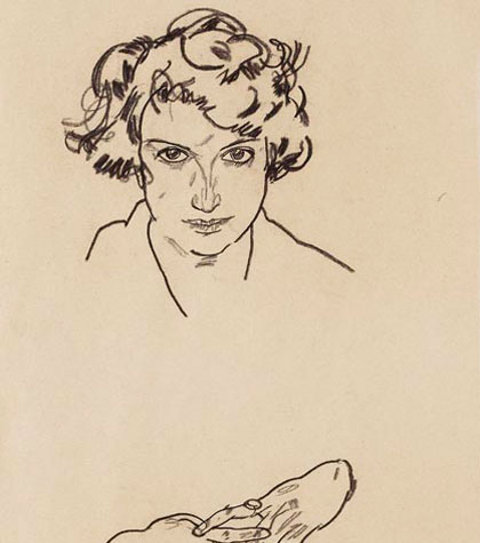
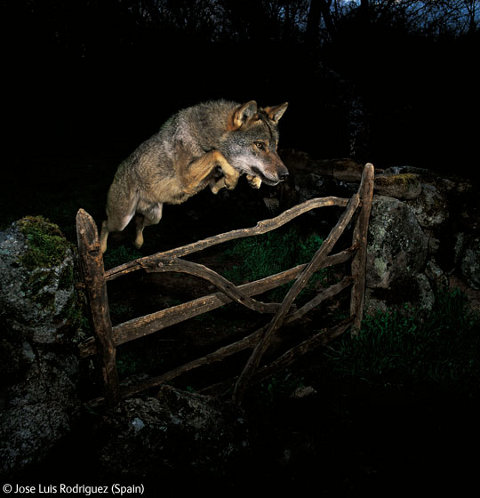





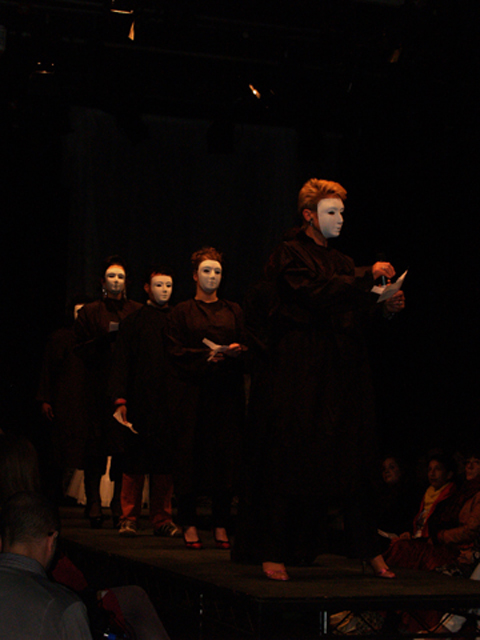
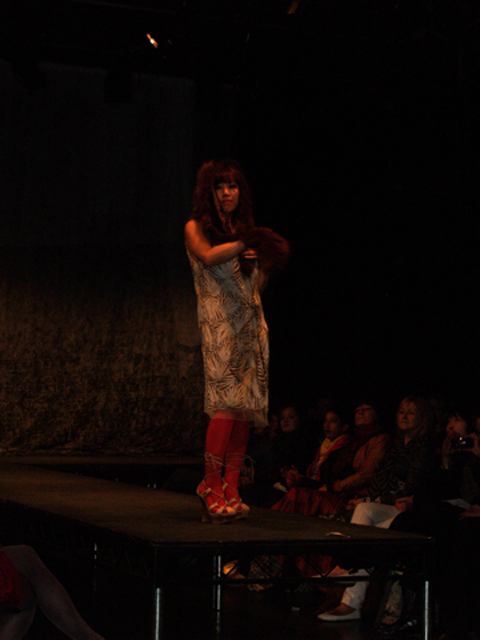

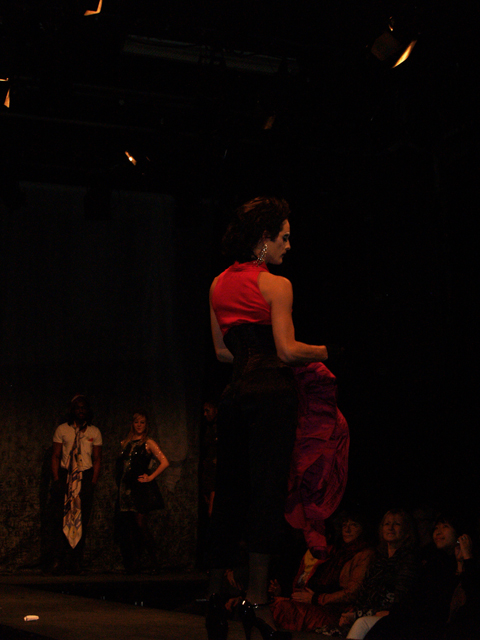
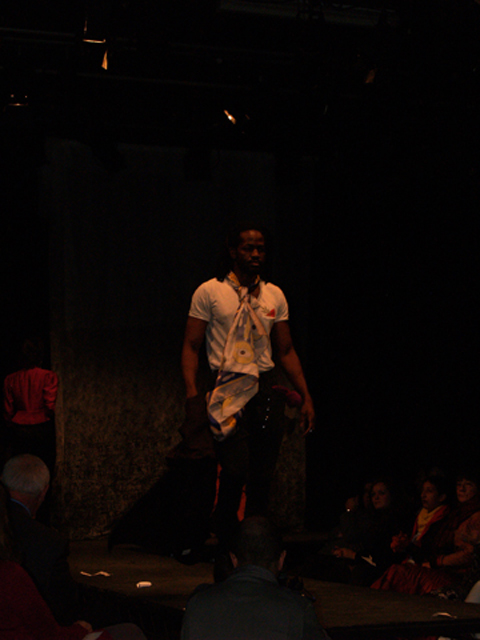




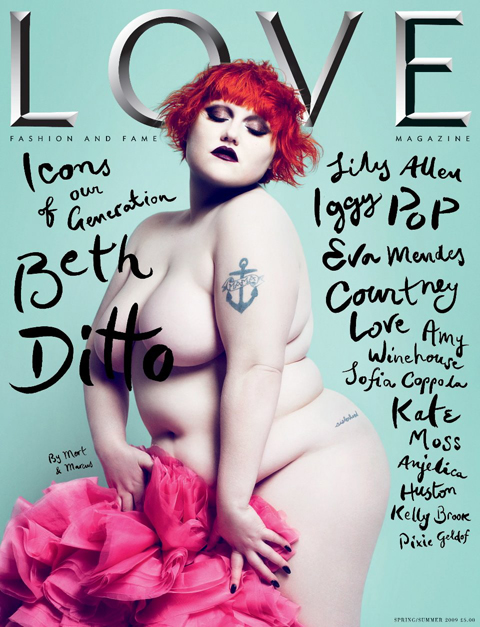




















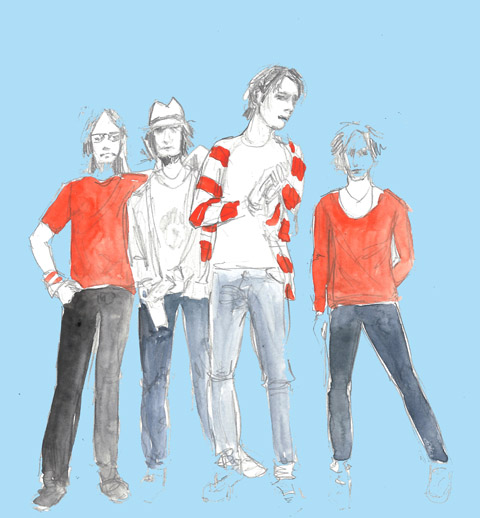





























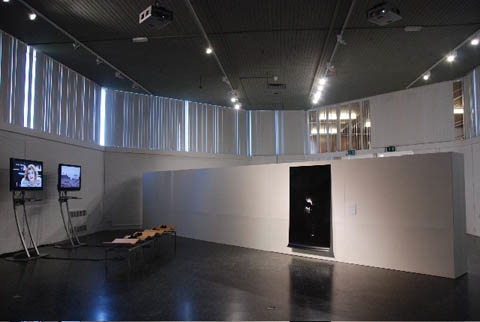 Frontera 450+, at the Station Museum of Contemporary Art, Houston Texas. A show dedicated to the women of Juarez and their situation. This inspired me to start the project. i had moved back to Norway at the time and I wanted to create a project that somehow diminished the distance, the physical distance to the place and the psychological distance to take in information of such difficult issues. I wanted to create a connection, because violence towards women is a global issue, happening in every society, rich or poor, far or near.The situation in Juarez is extremely complex and very difficult to describe using just a few words. But I think it is very important to share that despite the horror that still are happening and the increasing violence towards both men and women due to a war on drugs in the city, the women and the community I have seen and collaborated with is not a victimized community, it is a community of an enormous strength and ability to fight back and with a believe in change. Believe in change through working with the youth, education, support of the families so they can speak for themselves. It is all organized with the smallest means and in an environment of violence and mistrust. The government’s attempts on improvements are described by the activists as cosmetic.”
Frontera 450+, at the Station Museum of Contemporary Art, Houston Texas. A show dedicated to the women of Juarez and their situation. This inspired me to start the project. i had moved back to Norway at the time and I wanted to create a project that somehow diminished the distance, the physical distance to the place and the psychological distance to take in information of such difficult issues. I wanted to create a connection, because violence towards women is a global issue, happening in every society, rich or poor, far or near.The situation in Juarez is extremely complex and very difficult to describe using just a few words. But I think it is very important to share that despite the horror that still are happening and the increasing violence towards both men and women due to a war on drugs in the city, the women and the community I have seen and collaborated with is not a victimized community, it is a community of an enormous strength and ability to fight back and with a believe in change. Believe in change through working with the youth, education, support of the families so they can speak for themselves. It is all organized with the smallest means and in an environment of violence and mistrust. The government’s attempts on improvements are described by the activists as cosmetic.”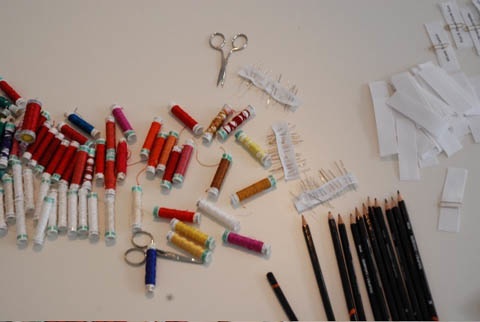














 stomach Cuba 2009″ class=”aligncenter size-full wp-image-21008″ />
stomach Cuba 2009″ class=”aligncenter size-full wp-image-21008″ />









